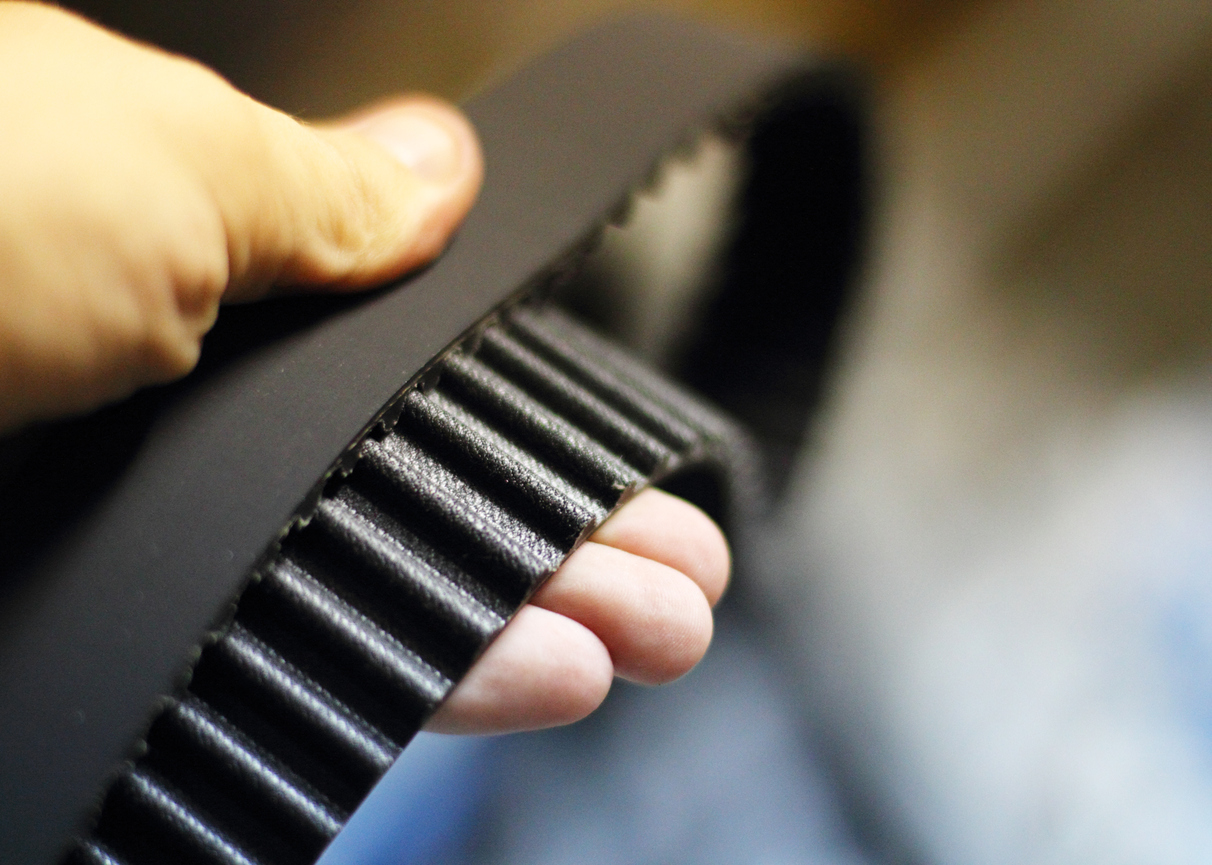
Rubber belts festooned with teeth, timing belts are designed to keep your vehicle’s crankshaft in sync with its camshaft and ensure that engine valves and pistons are operating in proper sequence. While relatively durable thanks to its typically nylon-reinforced innards, your timing belt will still need to be changed out every 90,000 miles or so.
Here are a few warning signs to look for when it comes to an aging timing belt:
Engine Won’t Turn Over. Timing belts need to be in good working order for your car to start. If your belt has been damaged, you will most likely hear the starter engage when you turn your key but the motor won’t ignite.
Engine Misfires. Worn-out timing belts will affect the fire rate of the engine they’re conducting. Older belts can slip along your engine’s camshaft and cause pistons to malfunction due to valves being out of sequence.
Ticking Noise. Since the timing belt is attached to the cam/crankshaft vis-à-vis a series of pulleys, when it starts to break down it can cause combustion issues as the cylinder head valves that transfer burnt fuel through the exhaust chamber are out of sync. This will result in an audible ticking sound that should definitely be considered a red flag for your belt.
Frontside Oil Leak. If your timing belt is cracked, motor oil could seep through its cover, which is held in place by nuts/bolts that can become loose over time. The gasket between your engine block and timing belt cover can also wear out if your engine overheats while the timing belt is failing.
If you are worried about your belts or have any questions at all about your vehicle, give us a call at 336-294-2137 or click HERE to schedule a service appointment to ensure your vehicle stays safely on the road year-round!
